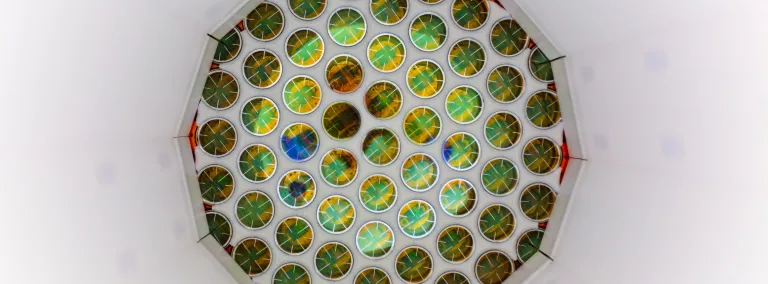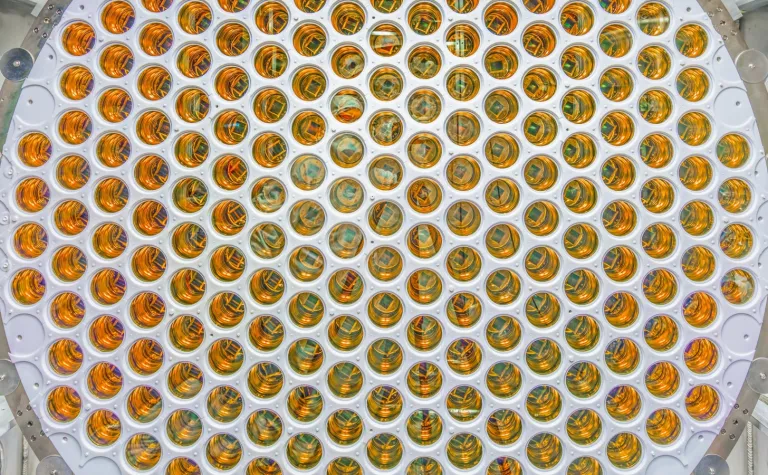
LUX
In July 2012, the Large Underground Xenon (LUX) dark matter detector moved into the Davis Campus at the 4850 Level of the Sanford Underground Research Facility. Just over a year later, on October 30, 2013, LUX researchers announced they had the most sensitive dark matter detector in the world. No dark matter was found, but that didn’t disappoint researchers.
“This is only the beginning,” said Yale physicist Dan McKinsey as he and his co-spokesperson, Brown physicist Rick Gaitskell, announced the results. “Now that we understand the instrument and its backgrounds, we will continue to take data, testing for more and more elusive candidates for dark matter.”
In May of 2016, LUX completed its search for dark matter. Again, it didn't actually find these elusive particles; however, it was once again, named the quietest detector in the world.
Over it's four-year run, LUX was searching for WIMPs (weakly interacting massive particles), so-called because they rarely interact with ordinary matter except through gravity. Dark matter, observed only by its gravitational effects on galaxies and clusters of galaxies, is the predominant form of matter in the universe.
At the core of the experiment, a sophisticated vacuum thermos filled with ultra-pure liquid xenon, cooled to minus 160 degrees F, was used in the search for dark matter. The liquid xenon bathes an array of photosensors, each capable of sensing a single photon of light. Researchers believe that when a WIMP strikes a xenon atom, the electrons are drawn upward by an electrical field and interact with a thin layer of xenon gas at the top of the detector, releasing more photons. The photosensors, located at the top and bottom of the detector, were able to detect a single photon so interactions could be pinpointed to within a few milliliters.
The great depth of the Davis Campus shields the LUX detector from the noise of cosmic radiation found on the surface of the earth. The LUX detector was installed in a 71,600-gallon tank of pure, deionized water, that will further protect the experiment from extraneous "noise," such as naturally occurring radiation from the surrounding rock.

